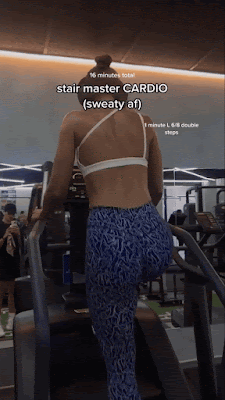How Long Does It Take to See Results from StairMaster?
The StairMaster is a popular cardiovascular exercise machine known for its ability to torch calories, boost endurance, and sculpt lower body muscles. But how long does it take to see tangible results from incorporating the StairMaster into your fitness routine? In this comprehensive guide, we'll explore the factors influencing progress on the StairMaster, realistic expectations for results, and strategies for maximizing your efforts. Backed by scientific research and expert insights, you'll gain a clear understanding of the timeline for seeing results and how to optimize your StairMaster workouts for success.
Factors Influencing Results: Several factors influence the rate at which individuals see results from using the StairMaster:
- Frequency and Duration: The frequency and duration of StairMaster workouts play a significant role in determining how quickly you'll see results. Consistent, regular workouts are key to making progress. Aim for at least 3-5 StairMaster sessions per week, with each session lasting 20-45 minutes, depending on your fitness level and goals.
- Intensity: The intensity of your StairMaster workouts also impacts the rate of progress. Higher intensity workouts, where you push yourself to work harder and faster, can yield faster results in terms of calorie burn, cardiovascular fitness, and muscle toning. Incorporating interval training, where you alternate between periods of high intensity and recovery, can further enhance results.
- Nutrition and Hydration: Nutrition and hydration play a crucial role in supporting your workouts and maximizing results. Consuming a balanced diet rich in lean proteins, complex carbohydrates, and healthy fats provides the energy and nutrients your body needs for optimal performance and recovery. Additionally, staying hydrated before, during, and after workouts helps maintain energy levels and supports muscle function.
Timeline for Results:
While individual results may vary based on factors such as fitness level, genetics, and adherence to a workout regimen, many people can expect to see noticeable improvements within a few weeks to a few months of consistent StairMaster workouts. Here's a general timeline for seeing results:
- Within 2-4 weeks: Increased cardiovascular endurance, improved stamina, and enhanced calorie burn.
- Within 4-8 weeks: Visible toning and tightening of lower body muscles, including the quadriceps, hamstrings, glutes, and calves.
- Within 8-12 weeks: Further improvements in muscle definition, increased fat loss, and enhanced overall fitness levels.
Maximizing Your Results:
To maximize your results on the StairMaster, consider the following strategies:
Mix up your workouts: Incorporate variety into your StairMaster sessions by adjusting the speed, resistance, and duration of your workouts. Try interval training, hill climbs, and reverse stepping to challenge different muscle groups and keep your workouts engaging.
Monitor your progress: Keep track of your workouts, including duration, intensity, and perceived exertion. Set specific goals for yourself, such as increasing workout duration or climbing a certain number of floors, and track your progress over time.
Support recovery: Prioritize rest and recovery to allow your muscles to repair and adapt to the demands of your workouts. Get adequate sleep, fuel your body with nutritious foods, and consider incorporating stretching, foam rolling, and other recovery techniques into your routine.
Stay consistent: Consistency is key to seeing results on the StairMaster. Make exercise a regular part of your routine and commit to sticking with it, even on days when you don't feel motivated. Celebrate your progress along the way and stay focused on your long-term goals.
Conclusion: The timeline for seeing results from the StairMaster can vary depending on individual factors and adherence to a workout regimen. By incorporating regular, challenging workouts, maintaining a balanced diet, and prioritizing recovery, you can expect to see improvements in cardiovascular fitness, muscle tone, and overall well-being within a matter of weeks to months. Remember to listen to your body, adjust your workouts as needed, and stay patient and persistent on your fitness journey.
Ready to take your fitness to the next level with the StairMaster? Consult with a certified personal trainer or fitness professional to design a customized workout plan tailored to your goals and abilities. With expert guidance and support, you can achieve your fitness aspirations and unlock your full potential on the StairMaster.]
(Citation: Swain, D. P., & Franklin, B. A. (2006). Comparison of cardioprotective benefits of vigorous versus moderate intensity aerobic exercise. American Journal of Cardiology, 97(1), 141-147.)


.jpg)
.gif)





.gif)